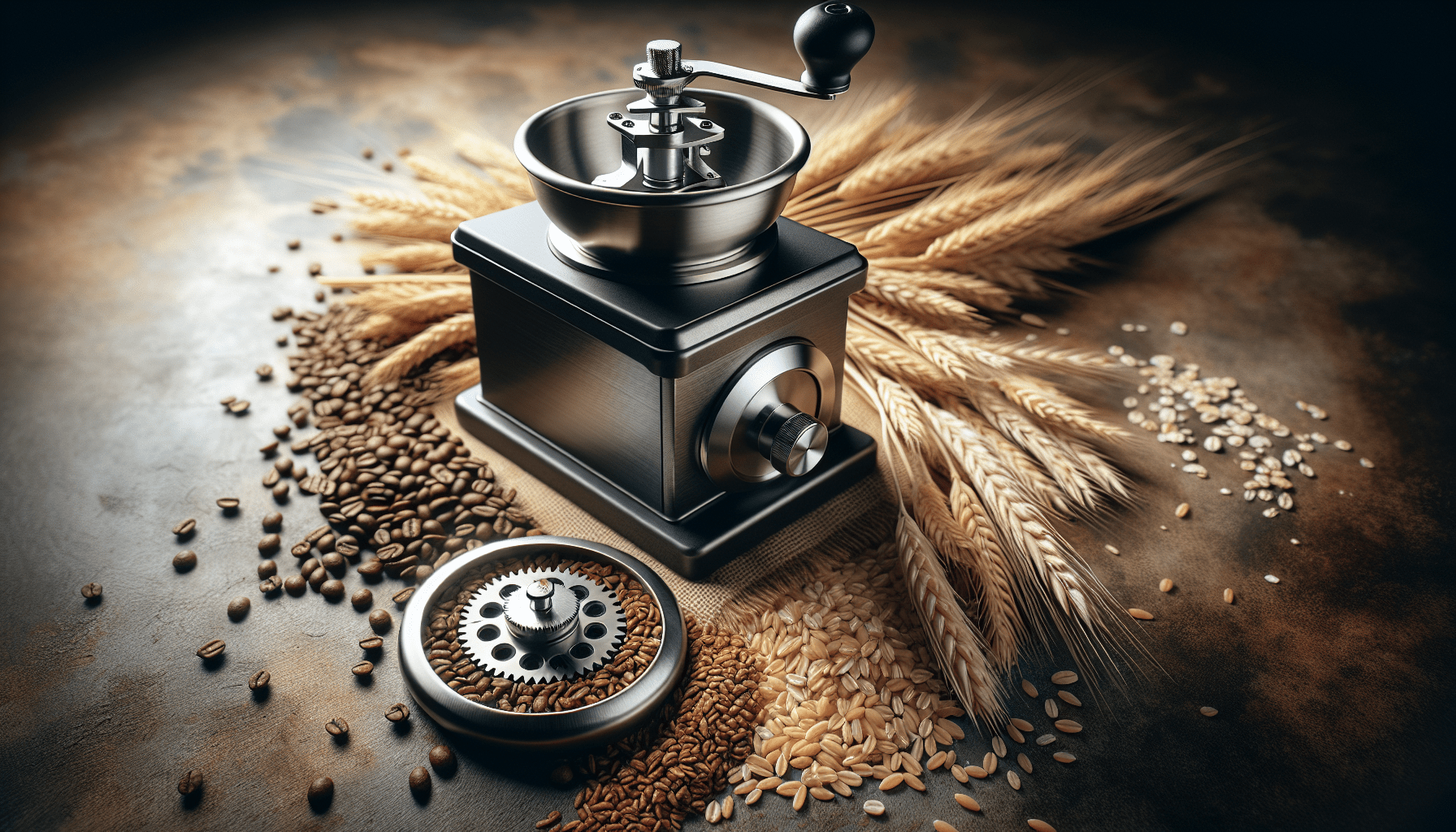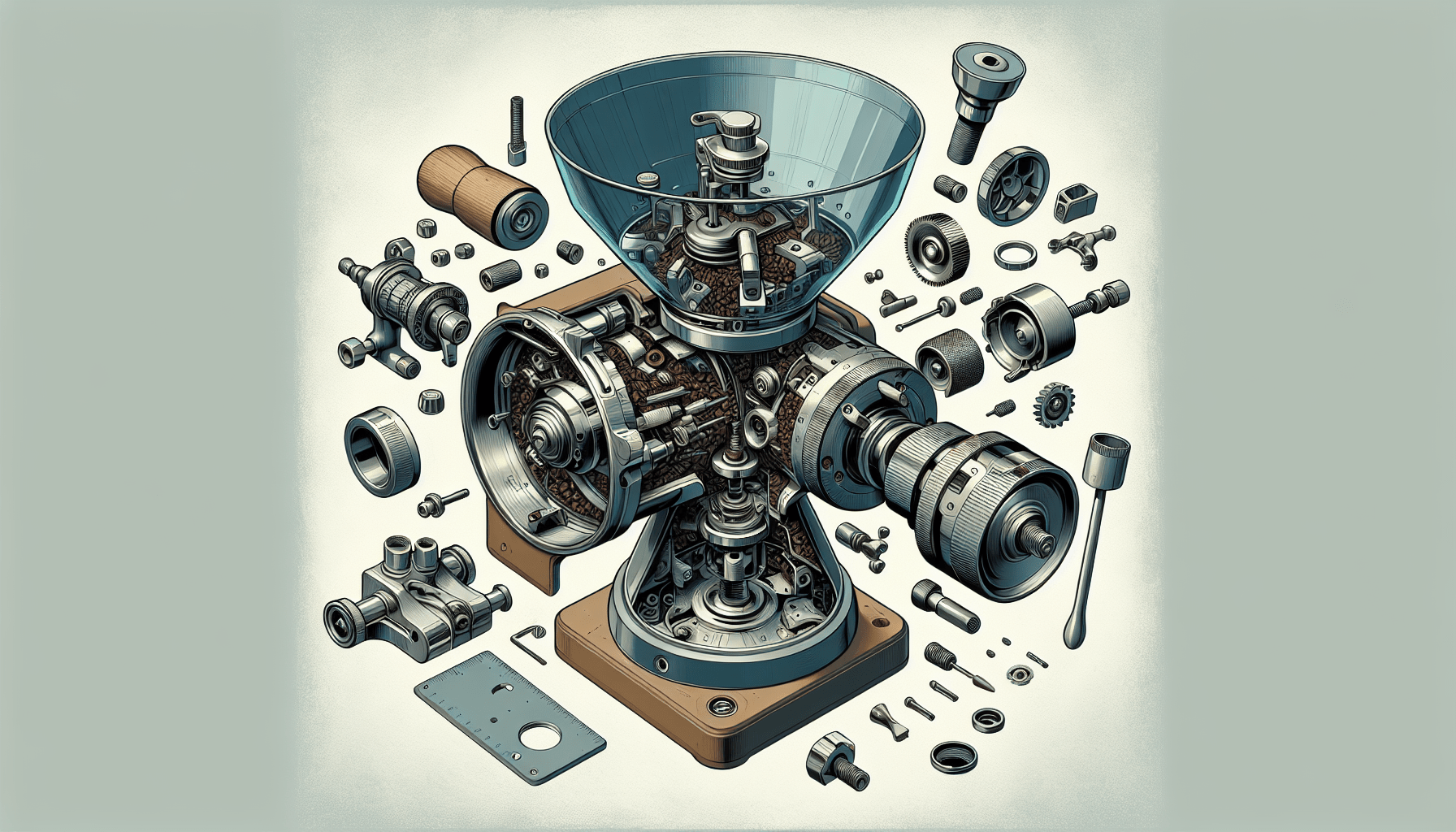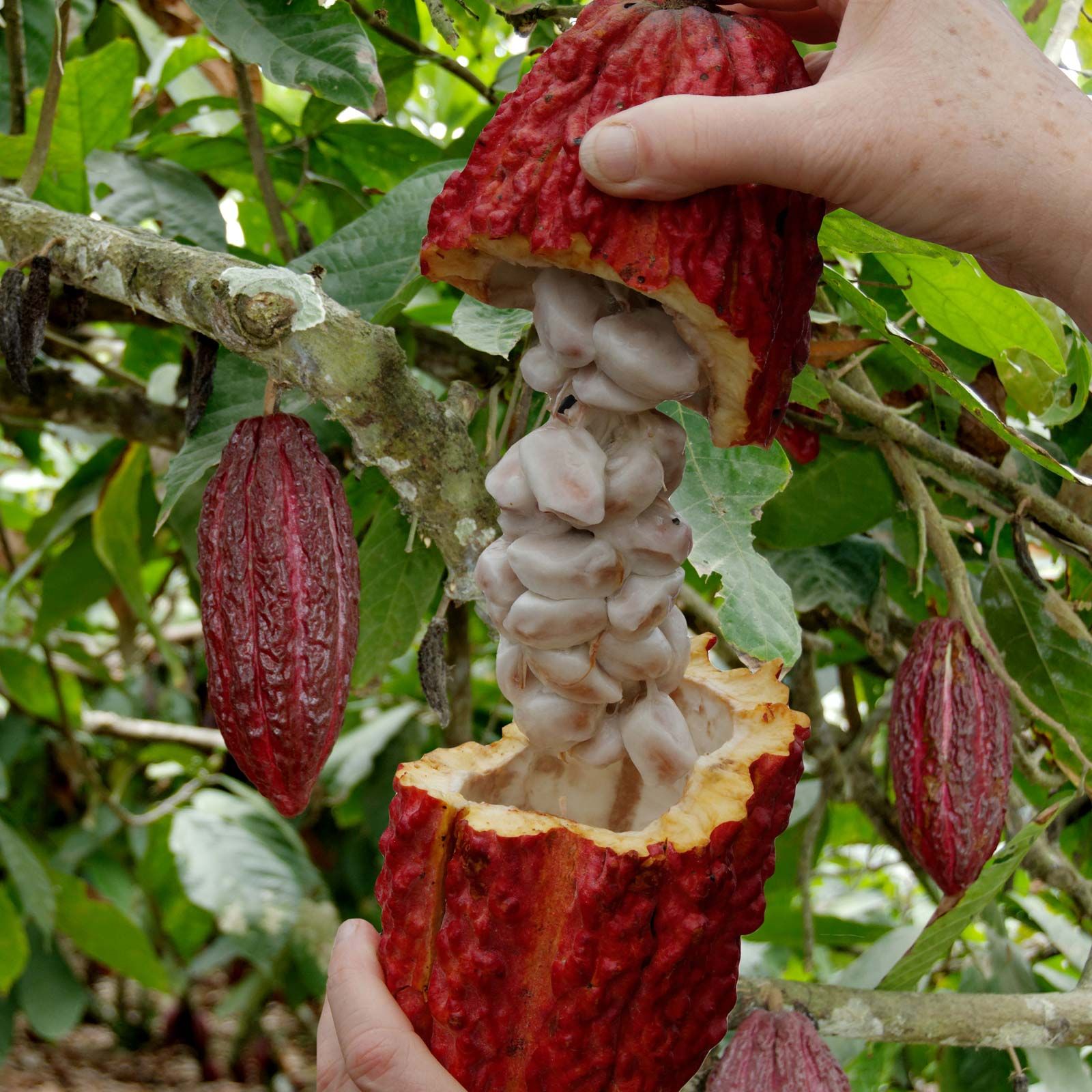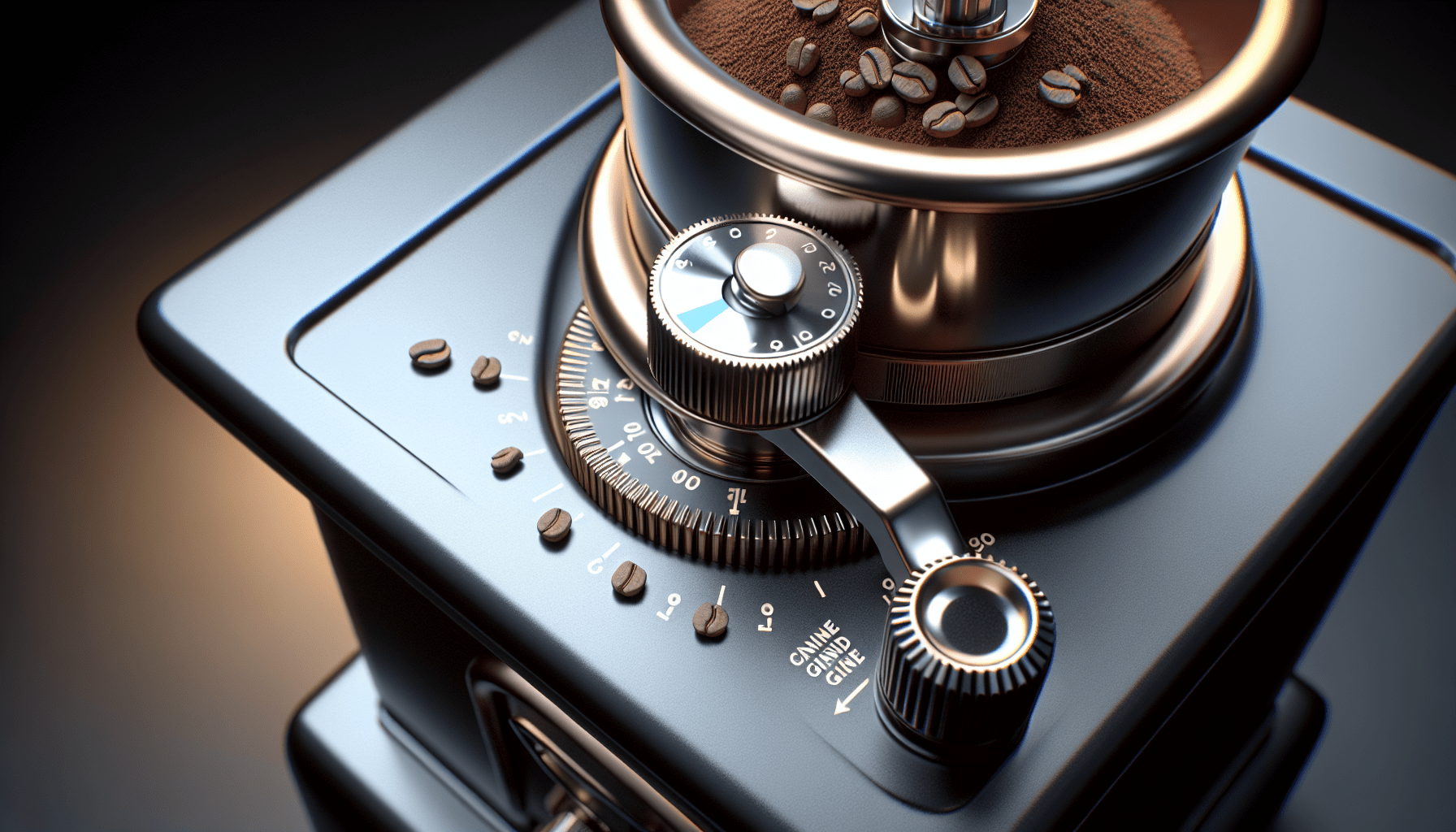Have you ever found yourself in the kitchen, craving a homemade bread or cake recipe, only to realize that you don’t have a grain grinder? Well, fear not! If you have a coffee grinder machine at home, you might be able to use it to grind your grains for baking. In this article, we will explore whether a coffee grinder can be a suitable alternative to a grain grinder and discuss the pros and cons of using this method. So, grab your apron and let’s find out if your coffee grinder can become your new baking sidekick!
Overview of Coffee Grinder Machines
Coffee grinder machines are essential tools for coffee enthusiasts who want to enjoy the freshest and most flavorful cup of coffee possible. However, these versatile machines can also be used for grinding grains for baking purposes. In this article, we will explore the different types of coffee grinder machines, their functionality, and the common uses they can have in the baking world.
Types of Coffee Grinder Machines
There are two main types of coffee grinder machines: blade grinders and burr grinders. Blade grinders are more affordable and have a simple design. They work by using a spinning blade to chop the coffee beans into smaller particles. On the other hand, burr grinders are more expensive but offer more precise and consistent results. They have two burrs, one stationary and one rotating, that crush the coffee beans between them.
Functionality of Coffee Grinder Machines
Coffee grinder machines perform the important function of grinding whole coffee beans into the desired consistency for brewing. The blades or burrs of the grinder break down the beans, releasing their oils and flavors. The functionality of these machines lies in their ability to grind the coffee beans to different levels, ranging from coarse to fine. This allows coffee lovers to customize the grind size according to their brewing method and personal preference.
Common Uses of Coffee Grinder Machines
While coffee grinder machines are primarily designed for grinding coffee beans, they can also be used for various other purposes, including grinding grains for baking. By adjusting the settings and utilizing the power of these machines, you can achieve finely ground grains that are essential for creating delicious baked goods. Therefore, coffee grinder machines can be a valuable addition to any baker’s kitchen.
Understanding Grain Grinding
Grain grinding is the process of reducing whole grains into smaller particles, typically referred to as flour. This process is crucial in baking, as it helps incorporate the grain’s flavors and nutrients into the final product. Understanding the basics of grain grinding is essential for bakers who want to experiment with different grains and achieve optimal results in their baked goods.
What is Grain Grinding?
Grain grinding involves breaking down whole grains, such as wheat, barley, oats, or rice, into smaller particles. The purpose of grain grinding is to create flour, which can be used as a primary ingredient in various baked goods, such as bread, pastries, and cakes. The size of the particles can vary, depending on the desired texture and consistency of the final product.
Different Types of Grains Used in Baking
Bakers have a wide range of grains to choose from when it comes to baking. Some of the most commonly used grains include wheat, rye, oats, barley, corn, and rice. Each grain brings its unique flavor, texture, and nutritional profile to the baked goods. Experimenting with different grains can add variety and depth to your baking creations.
Importance of Finely Ground Grains in Baking
Finely ground grains are essential in baking because they provide a smooth texture and even distribution in the final product. The finer the grind, the easier it is for the grains to blend seamlessly with other ingredients, resulting in a cohesive and well-rounded baked good. Furthermore, finely ground grains allow for better absorption of liquid, which can enhance the overall moisture of the baked goods.
Coffee Grinder vs Grain Grinder
While coffee grinder machines can be used for grain grinding, it’s important to understand the differences between coffee grinders and dedicated grain grinders. These differences can impact the grinding results and the overall suitability of using a coffee grinder for grains.
Differences in Design and Mechanism
Coffee grinder machines and grain grinders have different designs and mechanisms. Coffee grinders are specifically designed for grinding coffee beans and are optimized to achieve the desired grind consistency for brewing coffee. On the other hand, grain grinders are built to process different types of grains, providing finer control over the grind size and ensuring optimal results for baking purposes.
Suitability for Different Grinding Tasks
Coffee grinder machines, although versatile, may not be suitable for all types of grinding tasks. While they can certainly grind grains for baking, they may not achieve the same level of consistency and precision as dedicated grain grinders. Coffee grinders may be more effective for grinding softer grains, such as oats or rice, while struggling with harder grains like wheat or rye. Therefore, it’s important to consider the specific grinding task before using a coffee grinder for grains.
Factors to Consider Before Using a Coffee Grinder for Grains
Before using a coffee grinder for grain grinding, there are several factors to consider. Firstly, the size and power of the coffee grinder can affect its ability to grind grains effectively. Smaller, less powerful coffee grinders may struggle with harder grains and produce uneven results. Additionally, it’s crucial to ensure that the coffee grinder is thoroughly cleaned and free from any coffee residue before using it for grinding grains to avoid flavor contamination. Finally, it’s important to be aware that using a coffee grinder for grains may cause wear and tear to the machine over time.
Using a Coffee Grinder for Grain Grinding
If you decide to use a coffee grinder for grain grinding, there are certain steps and considerations to ensure successful and consistent results. Here are some guidelines to follow:
Adjusting the Grind Settings
Before grinding grains, it’s important to adjust the grind settings on your coffee grinder. Finer settings will result in a finer grind, while coarser settings will produce a coarser grind. Experiment with different settings to find the ideal grind size for your specific baking needs.
Preparing the Coffee Grinder for Grain Grinding
To prevent flavor contamination, make sure to thoroughly clean your coffee grinder before using it for grinding grains. Remove any remnants of coffee beans, oils, or residue. This will ensure that the flavors of your baked goods remain pure and unaffected by any residual coffee flavors.
Grinding Grains in Small Batches
It’s recommended to grind grains in small batches to achieve more consistent results. Overloading the grinder can lead to uneven grinding and may strain the machine. By grinding smaller quantities at a time, you can ensure that each batch is ground evenly and efficiently.
Impacts on the Flavor and Texture of Baked Goods
Using a coffee grinder for grain grinding can have an impact on the flavor and texture of your baked goods. Finely ground grains tend to result in a smoother texture and better incorporation into the dough or batter. The flavors of the grains will also be more pronounced, contributing to a more distinct and flavorful end product.
Advantages of Using a Coffee Grinder for Grain Grinding
While there are certain limitations and considerations when using a coffee grinder for grain grinding, there are also advantages that make it a viable option for many bakers.
Cost-Effective Alternative to Purchasing a Separate Grain Grinder
Investing in a separate grain grinder can be costly. By using a coffee grinder for grain grinding, you can save money and still achieve satisfactory results. It allows you to utilize a machine you already have for a different purpose, making it a cost-effective alternative.
Versatility in Grinding Various Grains
Coffee grinders offer versatility in grinding various grains. You can experiment with different types of grains and customize the grind size according to your baking needs. This flexibility allows for greater creativity and experimentation in the kitchen.
Convenience and Space-Saving Benefits
Using a coffee grinder for grain grinding offers the convenience of having a multi-purpose machine. Instead of cluttering your kitchen with multiple appliances, you can utilize one machine for multiple tasks. This not only saves space but also simplifies your baking process.
Potential Challenges and Limitations
While using a coffee grinder for grain grinding can be advantageous, it’s important to be aware of the potential challenges and limitations that may arise.
Risk of Cross-Contamination of Flavors
One of the main limitations of using a coffee grinder for grain grinding is the risk of cross-contamination of flavors. Coffee grinders often have residual coffee oils and flavors that can transfer onto the grains, affecting the taste of the baked goods. Thorough cleaning before and after use is essential to minimize this risk.
Potential Damage to the Coffee Grinder
Coffee grinders may not be built to withstand the demands of grinding grains. The hardness of certain grains, such as wheat or rye, can put a strain on the machine’s motor and blades, potentially leading to damage or decreased performance over time. It’s important to be mindful of the machine’s capabilities and limitations.
Uneven Grinding Results
Coffee grinders may not achieve the same level of grind consistency as dedicated grain grinders. Uneven grinding results can lead to inconsistencies in texture and baking performance. It’s important to be aware of this potential issue and adjust your baking techniques accordingly.
Overheating of the Coffee Grinder
Using a coffee grinder for grain grinding can generate heat, especially when grinding in larger quantities or for extended periods. Overheating the grinder can affect the flavor and quality of the ground grains. To prevent overheating, it’s advisable to grind grains in small batches, allowing the grinder to cool down between each grinding session.
Tips for Successful Grain Grinding with a Coffee Grinder
To achieve successful grain grinding with a coffee grinder, consider the following tips:
Choosing the Right Coffee Grinder
When using a coffee grinder for grain grinding, it’s important to choose a high-quality grinder with adjustable grind settings. Look for a grinder that offers consistency in grind size and has a strong motor to handle the demands of grinding grains.
Cleaning and Maintenance
Thoroughly clean your coffee grinder before and after each use to prevent flavor contamination and reduce the risk of damage to the machine. Follow the manufacturer’s guidelines for cleaning and maintenance to ensure optimal performance and longevity.
Avoiding Overload of the Grinder
To prevent strain on the coffee grinder and achieve more consistent results, avoid overloading the grinder with a large quantity of grains. Grinding grains in small batches will allow for better control and ensure even grinding.
Experimenting with Different Grains and Settings
Utilize the versatility of your coffee grinder by experimenting with different grains and grind settings. Try grinding various types of grains and adjust the grind size to achieve the desired texture and consistency in your baked goods.
Alternative Grain Grinding Methods
While using a coffee grinder for grain grinding is an option, there are alternative methods available for bakers who prefer dedicated grain grinding equipment.
Manual Grain Grinders
Manual grain grinders, also known as hand-cranked grain mills, offer a traditional and hands-on approach to grain grinding. These mills require manual effort to grind grains but provide precise control over the grind size and are typically more durable than coffee grinders.
Food Processors or Blenders
Food processors and blenders can also be used for grain grinding, although they may not achieve the same level of precision as dedicated grain grinders. These appliances offer convenience and are suitable for grinding smaller quantities of grains.
Purchasing Pre-Ground Grains
For bakers who prefer not to invest in grinding equipment, purchasing pre-ground grains is a convenient option. However, keep in mind that pre-ground grains may not offer the same freshness and flavor as grinding your own grains.
Expert Opinions and Recommendations
To gain insights from the baking community and industry professionals, seek out expert opinions and recommendations regarding the use of coffee grinders for grain grinding.
Feedback from Professional Bakers
Many professional bakers have experimented with using coffee grinders for grain grinding and can provide valuable insights into the benefits and limitations of this method. Consider reaching out to them or referring to their interviews or articles to gather expert opinions.
Manufacturer Guidelines and Warnings
Manufacturers of coffee grinders often provide guidelines and warnings regarding the use of their machines for grinding grains. Browse through the product manuals or visit the manufacturer’s website to ensure you are using the coffee grinder in a safe and appropriate manner.
Experiences of Home Bakers
Home bakers who have tried using coffee grinders for grain grinding can share their experiences and provide practical tips and advice. Engage with online baking communities or forums to learn from their firsthand accounts and make more informed decisions.
Conclusion
In conclusion, using a coffee grinder machine to grind grains for baking is a viable option that offers convenience, versatility, and cost-effectiveness. While coffee grinders may not achieve the same level of precision as dedicated grain grinders, they can still provide satisfactory results for most baking needs. It’s important to consider the specific grinding task, adjust the grind settings, and take precautions to prevent cross-contamination and overheating. Ultimately, the decision to use a coffee grinder for grain grinding depends on individual needs and resources. With proper care and experimentation, a coffee grinder can be a valuable tool in any baker’s kitchen.




